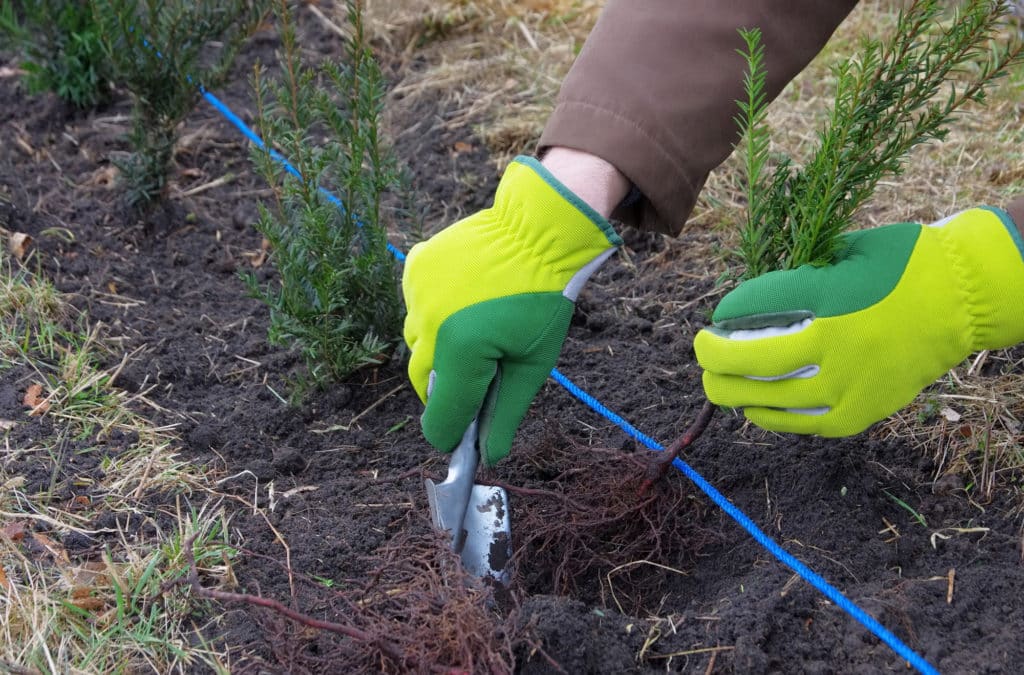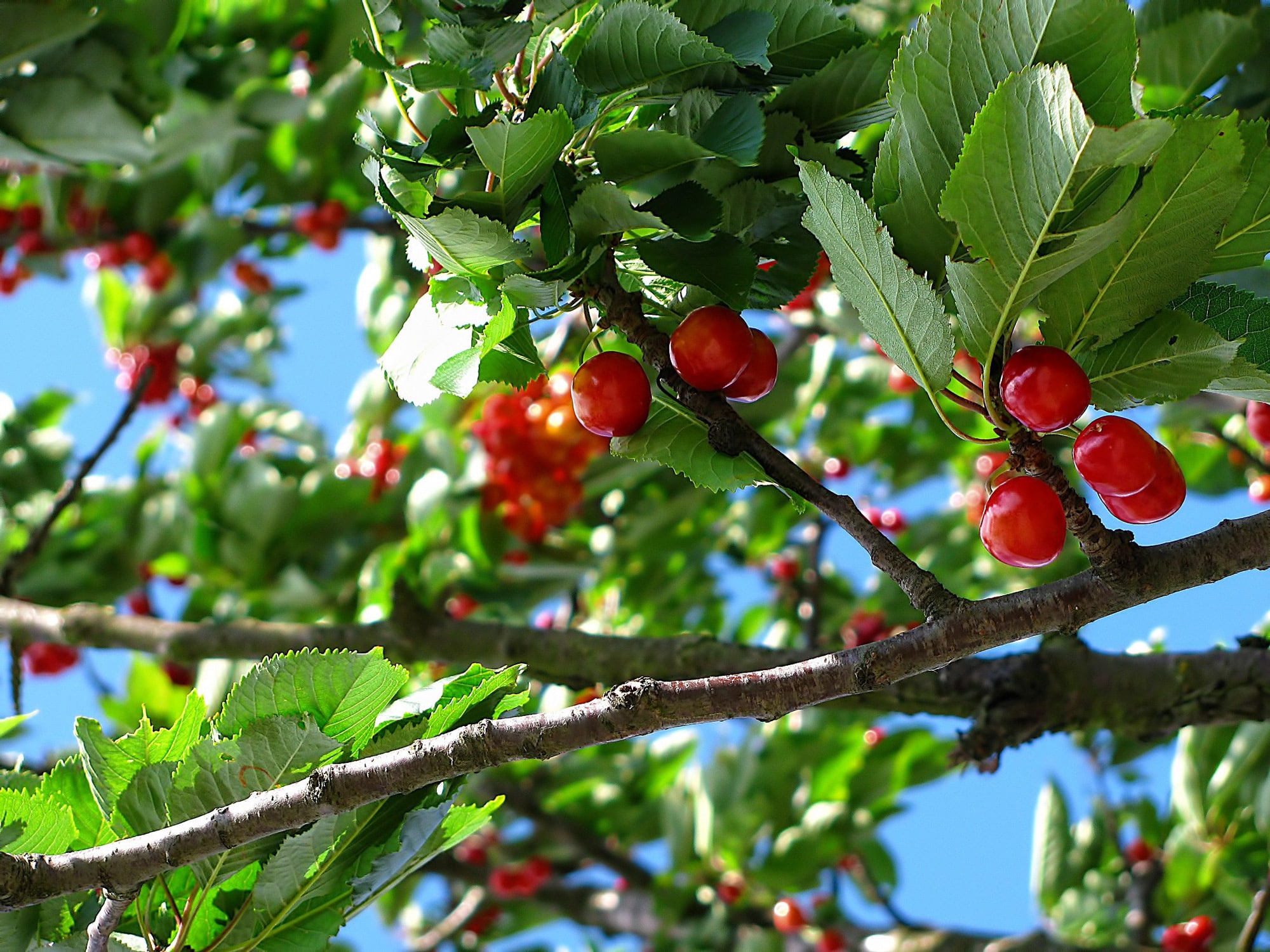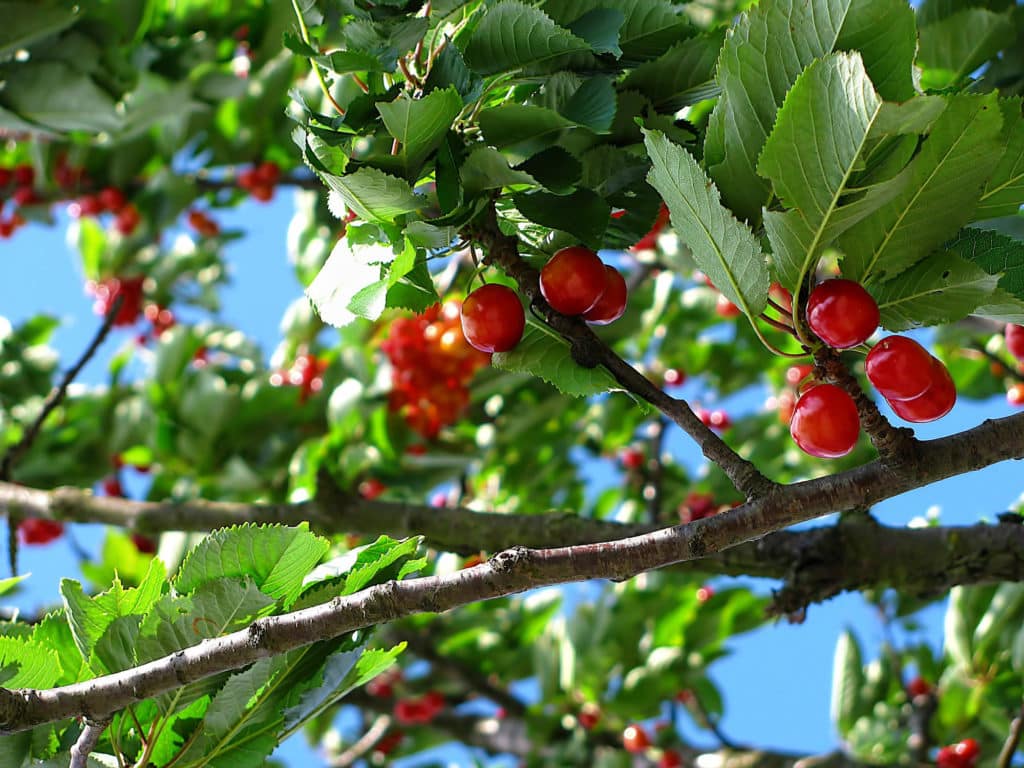29 Dec How to make savings on landscaping by planting in winter time
Landscaping and design are excellent examples of industries where you can make savings by spending money out of season. Find out how planting in winter can save you money.
Planting bare root trees, hedging and roses is the horticultural equivalent of buying summer clothes in the January sales. You may not see the benefits for a few months but when you do you’ll feel like a million dollars.
Planting a bare root tree in winter can reward you with delicious fruit in the following autumn.
In days of yore, bare root planting was the norm because landscaping and gardening were governed by the seasons. Roses, fruit trees and hedges would be ordered from the nurseryman in the summer. Come winter they would be delivered as bare root stock. These days’ innovations in horticulture mean that plants can be raised in pots and nurtured through automatic irrigation. That means that you can buy most species of trees, shrubs and herbaceous perennials all year round.
Bare root planting is considerably cheaper than buying potted plants and I think, it’s actually better for the plant too.
Advantages of bare root planting
- No bulky pots of soil = a lighter product that costs less to deliver
- Plants are dormant and less likely to be shocked by the journey,
- Pests and diseases are less likely to be carried on bare root stock,
- No leaves on the plants means they don’t need prolific watering to help them settle
- Large plant pots are usually plastic and rarely get re-used. Bare root plants don’t involve single use plastics. I like that
- With potted plants there is a tendency for roots to stay within the soil they arrived in rather than spread into the native soil. With bare root plants that can’t happen. That means better establishment and less risk of wind rock in taller plants.
- It’s cheaper to grow a plant for bare root stock (no pot, no expensive growing medium, and minimal irrigation, no re-potting so less labour). Because they are cheaper to grow and to deliver, they are cheaper to buy.
Disadvantages of bare root planting
- If plants are not “heeled in” as soon as they arrive the roots can become dehydrated and die.
- Seasonal winter weather in the UK is not always great for working out of doors
- Clay soils in Essex and Suffolk are usually sticky, claggy and unwelcoming in winter.
- If labels fall off it’s very difficult to identify plants without their leaves

Bare rooted yew saplings being planted to create a new hedge. Bare rooted hedging plants can cost as little as 20% of the price of the pot-grown equivalent.
Overcoming the disadvantages of bare root planting to get those savings
To a seasoned Essex Landscaper bare root planting is actually quite enjoyable. Landscapers don’t like being cooped up indoors for too many days at a time. We’d rather don our thermal undies, fill our thermos flasks with hot Bovril and head off to the outdoor gym aka work.
If bare root plants are delivered to us in foul weather, we’re lucky enough to have room to store them safely. Roots are kept damp – but not too damp – and protected from frost until the weather turns.
Labels – well, loose labels CAN be fun, but more often than not we can identify the plant. Usually the colour of its bark and buds and the overall shape of it will give the game away. Especially if we know what was ordered!
Planting bare root plants in clay soil
Clay soil is a challenge at times, particularly if the drainage is not great. But, just like frost and fog, we’re used to it. We also have a few tricks up our sleeves to make wet clay more manageable for us and hospitable for the plants.
If the soil is very claggy, we’ll dig a good sized planting hole. Probably 30-50% bigger than we need. As we remove soil from the hole, we mix it with some good quality, dry topsoil and some mycorrhizal fungi (to encourage root growth).
Next we’ll take some of that improved soil and make it into a cone shape in the centre of the planting hole. That’s going to help keep the plant roots out of the wet and it’s going to help them grow deeper into the soil.
For a tall plant, like a tree, we’ll pop a stake into the side of the planting hole before the bare root plant is positioned
Positioning a bare root plant is easy because you can see exactly where the branches are. For a hedge we try to place the plant so that most of the buds and branches go sideways. When planting trees or a roses we think about different viewing points. If the plant is going near a fence or a building, the strongest branches need to be at the front. Baldy bits can go at the back.
Once we have the angle, we sit the plant on top of the cone and spread the roots evenly around it. Sometimes we have to adjust the height of the cone. The top of the highest root should be no more than 1cm below the soil.
How to plant a bare root shrub
For help with making savings on winter planting
I’ve just done a quick sum in my head, and I reckon that on a moderately sized planting job the savvy gardener can save enough money on bare root plants to cover the cost of a professional landscaper. For the gardener that’s a win-win situation. All you have to do is make a phone call, agree the quote and let someone else get cold and wet. You still get to enjoy the fruits of your savings in the spring and summer when your lower price plants look amazing.
Contact Holland Landscapes about bare root planting work
Read more about trees and winter gardening
How to plant a tree and help it thrive
Our top 10 winter gardening tasks for indoors and outdoors





Sorry, the comment form is closed at this time.